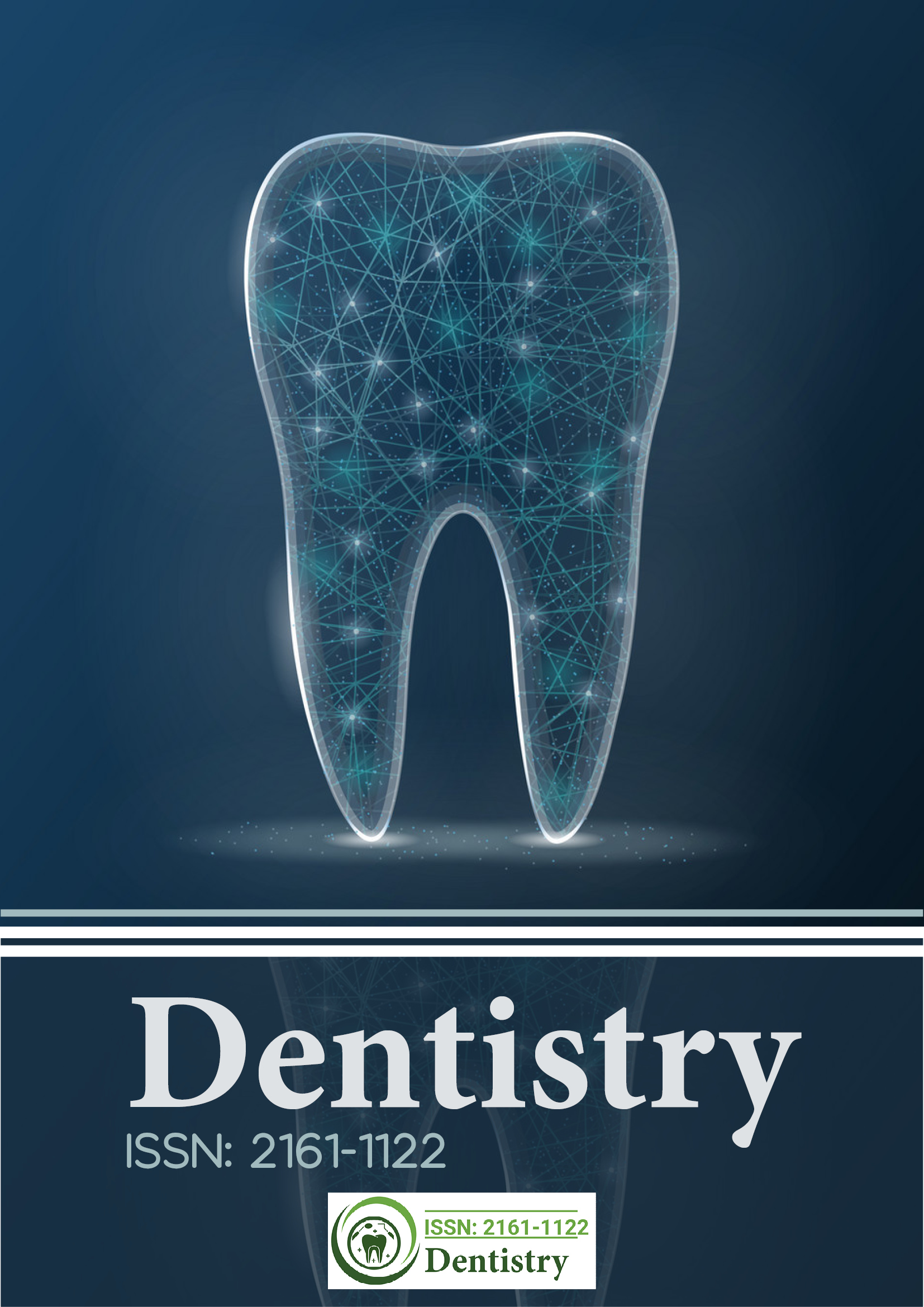Citations : 2345
Dentistry received 2345 citations as per Google Scholar report
Indexed In
- Genamics JournalSeek
- JournalTOCs
- CiteFactor
- Ulrich's Periodicals Directory
- RefSeek
- Hamdard University
- EBSCO A-Z
- Directory of Abstract Indexing for Journals
- OCLC- WorldCat
- Publons
- Geneva Foundation for Medical Education and Research
- Euro Pub
- Google Scholar
Useful Links
Share This Page
Journal Flyer

Open Access Journals
- Agri and Aquaculture
- Biochemistry
- Bioinformatics & Systems Biology
- Business & Management
- Chemistry
- Clinical Sciences
- Engineering
- Food & Nutrition
- General Science
- Genetics & Molecular Biology
- Immunology & Microbiology
- Medical Sciences
- Neuroscience & Psychology
- Nursing & Health Care
- Pharmaceutical Sciences
Association of oral hygiene status with caries incidence in primary teeth
24th Global Dentists and Pediatric Dentistry Annual Meeting
June 11-12, 2018 | London, UK
Dobrinka Mitkova Damyanova and Sirma Todorova Angelova
Medical University Varna, Bulgaria
Posters & Accepted Abstracts: Dentistry
Abstract:
Aim: The aim is to determine the relationship between the OHI-S, caries incidence and age for children's groups. Materials & Methods: Object of observation: First group - 100 children aged 4.5 and 6 years without treatment with varnish CV. Second group - 100 children aged 4, 5 and 6 years treated with Clinpro â?¢ White Varnish with TCP (Tri-Calcium phosphate) (3M) â?? CV. Oral-Hygiene Index, OHI-S Greene & Vermillion (PI / 6 + CI / 6) - (Modified) is used to establish Oral Hygiene status. Location of the study â?? University Medical Dental Center Varna, Clinical Halls for Children's Dentistry, Faculty of Dental Medicine â?? Varna. A specialized STATISTICA 10.0 package is used for statistical analysis of the data Results: The resulting p-levels are less than 0.05, indicating that the dmft variable (dental caries frequency) also depends on the OHI-S values and the age factor of the study groups of children. The above table shows that there is a statistically significant difference in OHI-S mean values, as p-level = 0.0000001 < 0.05. The hypothesis of equivalence of mean values at a significance level of 0.05 is discarded. The presence of a statistically significant difference in average of OHI-S for untreated and OHI-S for treated children means that the index values for untreated children are higher than those for the treated children (p-level = 0.0000001, p < 0.05). Conclusion: A Poisson regression for dependent values of the dmft index of OHI-S and lower jaw, factor dmft /p-levels of less than p<0.05/. We found a statistically significant difference. Recent Publications 1. Ten Cate's (2013).Oral Histology, Nanci: Elsevier; 122 p. 2. Chou R, Cantor A, Zakher B, Mitchell J P and Pappas M (2013). Preventing dental caries in Children, 5 years: systemic review updating USPSTF recommendation. Pediatrics. 132(2):332-35. 3. Dos Santos AP, Nadanovsky P and de Oliveira BH (2013). A systematic review and meta-analysis of the Effects of fluoride toothpastes on the prevention of dental caries in the primary dentition of preschool children. Community Dentistry and Oral Epidemiology; 41 (1): 1-12. 4. Nyvad B, et al (2013). Dental caries in a molecular microbiological perspective. Caries Res. 47: 89â??102. 5. Relly MT, De Jesus Vinas J and Hatch J P (2013). Effectiveness of a sealant compared with no sealant in preventing enamel demineralization in patients with fixed orthodontic appliances: A prospective clinical trial. American Journal of Orthodontics and Dentofacial Orthopedics. 143(6):837-844.
Biography :
Dobrinka Mitkova Damyanova has gained her Master degree of Dental Medicine in the year 1997 in Medical University, Faculty of Dental Medicine - Sofia, Bulgaria. She has completed her PhD in Medical University Varna, Bulgaria in 2017. Since 2008, she is an Assistant in the Department of Conservative Dentistry and Pediatric Dentistry and since 2013 she is working in the Department of Pediatric Dentistry, Faculty of Dentistry-Medical University of Varna.
Sirma Todorova Angelova completed her Graduation at University of Economics, Varna, Bulgaria and Master’s degree in International Financial Affairs. Since 2011, she has been working as an Assistant Professor in Department of Pediatric Dentistry, Faculty of Dental Medicine, Medical University, Varna. Her occupation is related to academic teaching at Pre-Clinics of Pediatric Dentistry, Dental Prophylaxis and Clinics of Pediatric Dentistry.
Email:dr_damyanova@abv.bg
Email:dsirma_angelova@abv.bg

